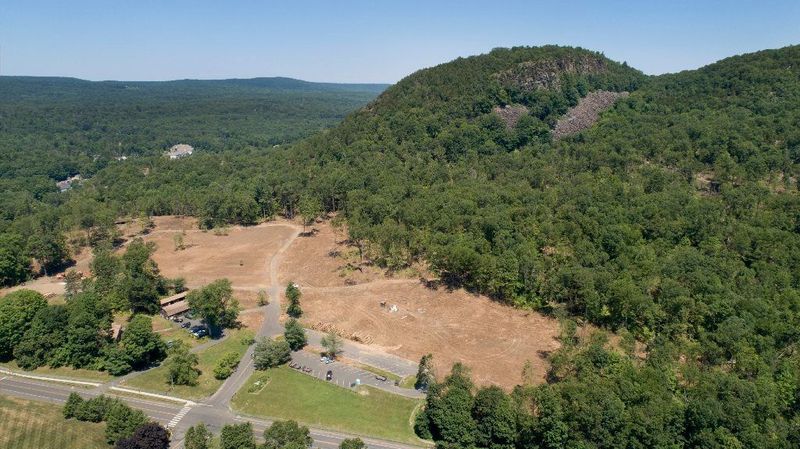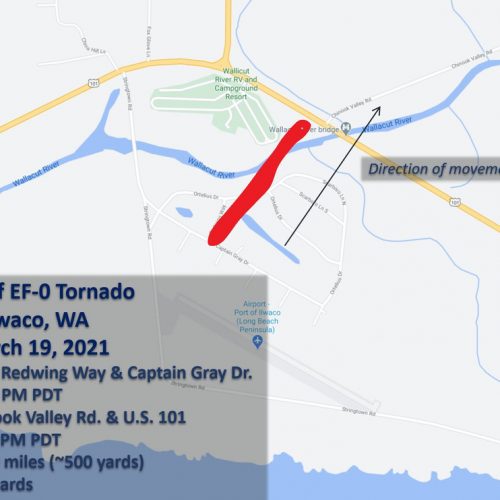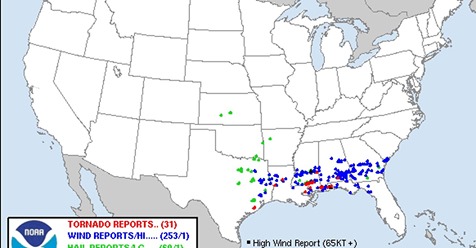May 15, 2018 started out as one of those hot, sticky summer-like days that Connecticut sometimes gets in late spring, with temperatures rising into the low 80s.
But that afternoon, a line of thunderstorms struck with savage force, spawning multiple tornadoes and brutal winds that left two dead, several injured, millions of trees downed or damaged, and hundreds of thousands across the state without power. A year later, officials say, many Connecticut residents are still struggling to cope with the post-storm cleanup and repair costs.
State officials estimate the tornadoes and winds caused $23.7 million in damage and clean-up costs for state agencies, cities and towns across Connecticut, and millions more for private homeowners and businesses. Many public agencies are still waiting for federal storm cost reimbursements 12 months after the damage was done.
Eversource, the state’s largest utility company, estimates it spent $65 million repairing about 309 miles of downed power lines. In total, United Illuminating and Eversource reported they had to restore power to some 238,000 customers who lost service as a result of the storm.
Sleeping Giant State Park, one of several state parks forced to close because of fallen trees and damaged buildings, is the only one still closed for clearing and repair work. State officials say they are now hoping to reopen the popular park by the time the main summer season begins in July.
Those May 2018 storms were part of a national pattern of violent weather across parts of the U.S. that spring. According to Weather.com, the intense squall line that hammered the northeastern region a year ago today covered roughly 470 miles.
The line of thunderstorms had come slicing across Pennsylvania and New York and slammed into northwestern and western Connecticut late in the afternoon, National Weather Service records show.
At 3:44 p.m., a tornado was spotted in Winsted. Carrying winds estimated at 95 mph, it smashed its way across eight city blocks, shearing off trees, damaging homes and power lines. By 3:52 p.m., what may have been the same tornado was seen spinning over the Barkhamsted Reservoir.
At 4:37 p.m., what NWS experts described as a “macroburst with maximum [wind] speeds of 110 mph” rammed through New Fairfield and Brookfield leaving a nine-mile path of uprooted and broken trees and damaged houses. Deadly winds across the area killed two people and seriously injured another.
At 4:53 p.m., a tornado touched down and swept across portions of Southbury and Oxford in just eight minutes. The top wind speeds, estimated at 100 mph, shattered and toppled trees, ripped away roofs, and sent power lines and poles crashing across roads and driveways.
In Danbury, a man fled to his truck to take refuge from the winds and was killed by a falling tree. Another tree was blown down on a car on Brush Hill Road in New Fairfield, killing a 41-year-old woman. The three-year-old child in the car managed to survive.
Another tornado hit in Beacon Falls at 5:01 p.m. near the intersection of Bethany Road and Bonna Street. With winds reaching an estimated 110 mph, the tornado raced 9.5 miles through Bethany and Hamden to a point just beyond Sleeping Giant State Park. Tens of thousands of trees in the heavily wooded area were snapped off, uprooted or damaged by the howling winds. Houses and cars were smashed by falling trees, parts of houses were torn away and state park buildings were obliterated.
Hail the size of baseballs was reported in parts of northern Connecticut, battering homes and cars.
Then-Gov. Dannel P. Malloy declared a civil emergency. Utilities called in crews from other states to help clear tangled and downed lines. State and municipal workers and volunteers began the massive task of opening blocked roadways and helping people trapped in their homes.
Hamden was one of the towns hardest hit by the tornadoes. “It was a very nasty, ferocious storm,” Hamden Mayor Curt Leng said this week. “I’d never seen anything like it… One house could be destroyed and the house right next door to it wouldn’t have even a flower damaged.”
Leng said nearly 200 homes in his community suffered some sort of damage. “Many had significant damage, and some were totaled,” he said.
The Federal Emergency Management Agency (FEMA) agreed to issue an emergency assistance declaration to provide aid for state agencies and municipalities that were damaged or had storm cleanup costs. But federal officials rejected Connecticut’s requests and appeals for FEMA disaster grants for private property owners, arguing in part that private insurance would cover most of those costs.
FEMA’s reimbursement for the storm costs incurred by the state and municipalities will cover 75 percent of total expenses, according to Scott Devico, spokesman for the state Department of Emergency Management and Homeland Security.
The reimbursements will amount to about $17.7 million and will go to about 45 different municipalities and state agencies, Devico said. So far, FEMA officials have authorized only $1.5 in storm reimbursement payments for Connecticut.
Although federal officials rejected pleas to provide homeowners and businesses storm damage grants, they did authorize low-interest loans through the U.S. Small Business Administration for eligible property owners.
“We had residents who paid an estimated $75,000 in clean-up costs for downed trees,” Leng said. “Many households had clean-up costs in the $20,000 to $50,000 range.”
Leng said very few Hamden residents have “the disposable income to handle costs like that” and many are continuing to suffer financially because of last year’s storm.
Several state parks were shut down as a result of storm damage, but most were reopened within weeks. More severe damage kept Kettletown State Park in Southington and Wharton Brook State Park in North Haven and Wallingford closed for months. Both those parks are now reopened.
But the tornado that ravaged Sleeping Giant State Park blew down acres of trees, virtually destroyed toilets and equipment buildings, and changed the face of the park. Tom Tyler, director of Connecticut’s state park system, said the state still needs to do work on culverts and drainage along the main Tower Trail to the park’s summit.
Park officials had been hoping they could reopen the park by Memorial Day, but Tyler said it now appears “likely we will slip a little past that.” He said the repairs and clearing of downed timber at the park will cost nearly $1 million.
Tyler said volunteers from the Sleeping Giant Park Association have made “huge, huge efforts” to assist the state in clearing downed trees from the park’s 32 miles of trails.
Storm-related work at Kettletown State Park amounted to about $158,000, and the state spent close to $425,000 to reopen Wharton Brook State Park, according to Tyler.
by Gregory B. Hladky (2019, May 15) Hartford Courant




